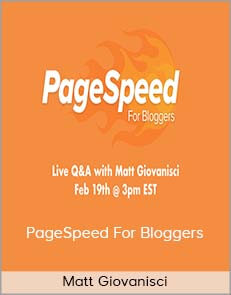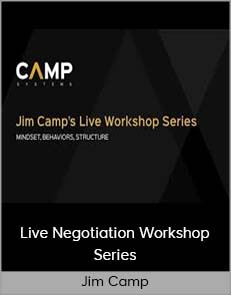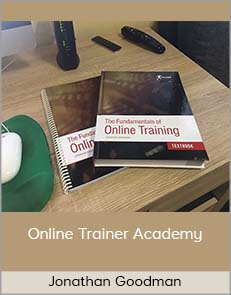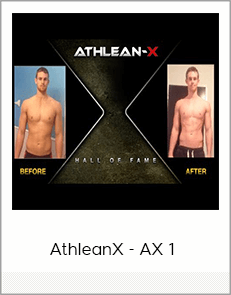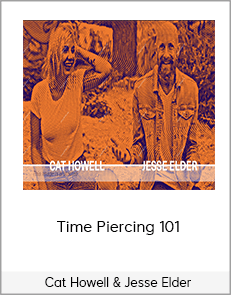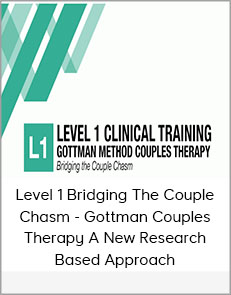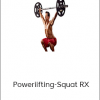-
1 × $25.00
-
2 × $90.00
-
1 × $50.00
-
1 × $100.00
-
2 × $65.00
-
1 × $75.00
-
1 × $62.00
-
1 × $60.00
-
1 × $120.00
-
1 × $692.00
-
1 × $270.00
-
1 × $40.00
-
2 × $72.00
-
1 × $60.00
-
1 × $20.00
-
1 × $40.00
-
1 × $130.00
-
1 × $150.00
-
1 × $130.00
-
1 × $30.00
-
1 × $25.00
-
1 × $40.00
-
1 × $77.00
-
1 × $25.00
-
1 × $35.00
-
1 × $15.00
-
1 × $35.00
-
1 × $25.00
-
1 × $560.00
-
1 × $35.00
-
1 × $150.00
-
1 × $30.00
-
1 × $45.00
-
1 × $140.00
-
1 × $45.00
-
1 × $60.00
-
1 × $36.00
-
1 × $130.00
-
1 × $145.00
-
1 × $45.00
Bodybuilding – Poweriifting-Squat RX
$30.00
Tempos with a slow eccentric are often useful for bodybuilding squats but usually have no place in powerlifting squats.
Bodybuilding – Poweriifting-Squat RX

Check it out: Bodybuilding – Poweriifting-Squat RX
Here’s what you need to know…
After the newbie stage, you need to pick between getting stronger or getting bigger and squat accordingly.
Mix lower rep squats and higher rep squats for hypertrophy (8-12 and even sets of 25 or 50) and use lower rep squats for strength (1-5).
Tempos with a slow eccentric are often useful for bodybuilding squats but usually have no place in powerlifting squats.
A longer time under tension is great for hypertrophy, but not so great for strength.
Generally speaking, use a high-bar placement for bodybuilding squats and a low-bar placement for powerlifting squats.
For building muscle, mix up short rest periods and long rest. When training for strength, have a minimum of three minutes rest between sets to maximize recovery and strength.
A bodybuilding squat requires a narrow stance while a powerlifting squat is best approached with a hip dominant stance.
To maximize results from the squat, it all comes down to reverse engineering the movement and asking yourself the question, “What’s my current training goal?” During your first year or two of training you can squat every Monday and get results with no problem. But after a while those gains will slow no matter how hard you bust your butt. When this happens it’s time to take a step back and pick between the following two goals:
Get Stronger
Get Bigger
Sure, there’s always a carryover in size and strength while squatting, but what we’re talking about here is squatting to maximize either strength or size. Why is this important? Well, for the bodybuilder, what he squats really doesn’t matter. What matters is the development of his legs. For the powerlifter, no one judges the size of his legs, only how much he lifts. As such, he has to squat with his goal in mind.
Let’s break down ten components of the squat and discuss the differences between a powerlifting squat and a bodybuilding squat.
1 – Reps
When squatting to build muscle, the standard rep range of 8-12 works very well. However, rep schemes of 25-50 reps can also help build muscle. There are a few reasons for this:
The different mix of muscle fiber types in your legs.
The blood volume of higher reps will increase the pump (always a good thing).
Higher reps tend to lead to GH output (great for building muscle and losing fat).
If you look at most powerlifters and strength athletes, most powerlifters are doing between 1 and 5 reps. Five reps is a great number for strength and also adding some size, but if you’re a weight-class based athlete and you don’t want your legs to get any bigger, stick with 1-3 reps.
2 – Weight
For bodybuilding purposes, no one’s judged on how much they can lift; they’re judged on how they look. Sure, you want to use as much weight as possible, but the key is working the muscle. You use whatever weight is necessary with proper form that allows you to get the right amount of volume. What you lift matters, but what matters more is how you lift the weight. A slower tempo bodybuilding squat with a 3-1-X-1 tempo (see component #3) can destroy your legs without using a ton of weight.
With powerlifting, the weight is all that matters. You’re not trying to isolate or build muscle. The goal is to squat as much weight as possible, hit the depth needed, and stand back up.
3 – Rep Tempo
Another factor when lifting weights is the tempo of your lifting. Let’s say you see the tempo prescription 4-1-X-1. The first number is the eccentric or the negative phase (in this case, the lowering of the weight). So the 4 would mean a 4-second eccentric. The second number is the pause between lowering and lifting. In the case of a squat, the pause is at the bottom, which in this case is 1 second. The third letter stands for the concentric or the explosive phase – the lifting of the weight. Here we use X to connote AFAP, or “As Fast As Possible.” The last number is the pause at the top of the rep. This could be a squeeze at the top of the movement or it could be a standard rest time depending on your training goals. In our example, we use 1-second pause. Let’s examine each phase.
Eccentric Phase
Using tempo works very well for bodybuilding/hypertrophy protocols. The negative portion of the rep is very important in building muscle (good thing), but also very “bad” for causing muscle soreness. The muscle soreness isn’t a big deal if you only squat once a week, but most powerlifters squat two to four times a week so they can’t afford to be perpetually sore.
Pause Phase
Pauses can be beneficial for both powerlifting squats and bodybuilding squats. For bodybuilding, the pause phase can be great for getting a full stretch in the muscle and improving the muscle ROM (Range Of Motion). For powerlifting, the pause at the bottom can help make you stronger when you “drive out of the hole” in the bottom portion of a squat. It’s also beneficial in helping to find your groove on a deep squat.
Concentric Phase
Controlled eccentric speed is beneficial for hypertrophy. When it comes to powerlifting, there isn’t much need to focus on slow negatives or tempo training as you’re always training at one speed in powerlifting, which is as fast as possible. When you’re squatting big weight, you may not be moving visibly fast, but the important thing is to try to move the weight AFAP. So, using tempo on concentrics or eccentrics isn’t as important for powerlifting as it is for bodybuilding.
Top Phase
For bodybuilding, the top phase is a great time to contract the muscle. Contracting the muscle is key for hypertrophy and also for improving the “mind muscle connection.” For powerlifting, the top phase should be a rest to save energy for the next rep.
4 – Time Under Tension
Time under tension (TUT) is essentially how long your muscles are working during the set. If you’re using any tempo protocols with slower eccentrics, this will dramatically increase time under tension. When it comes to building muscle, your legs have a wide variety of muscle fiber types. Therefore, they can respond to low-volume sets and high-volume sets. Even crazy rep schemes of 50 reps of squats per set will help your legs grow. Let’s look at an 8-rep set of squats using a 4-1-4-1 tempo:
4 Four-second eccentric or lowering phase
1 One-second pause at bottom
4 Four-second concentric or lifting phase
1 One-second top/squeeze position
The average rep will take 10 seconds, so the time under tension for this 8-rep set would be 80 seconds of work, and TUTs of longer duration like this example are great for hypertrophy.
In powerlifting, all lifters are judged by their 1RM and the average lift lasts only a few seconds, so it only stands to reason that most training tempos should be in that range (extremely short). Most powerlifting programs incorporate sets of 5 reps, 3 reps, and 1 rep. There are benefits to slower eccentrics for powerlifting (depending on your program), but overall, most powerlifting training is done with a very fast time under tension and fast concentrics and eccentrics. This is done to reduce soreness and also to improve the speed of the bar. After all, the faster you are, the stronger you are.
5 – Bar Placement
There are two general bar positions for the bar when squatting, low bar and high bar. With a low bar squat, the bar sits below the traps around the scap/shoulder blade area. With a high bar squat, the bar sits on top of the traps, or just a little bit below the traps.
Most bodybuilding squats are done with a high bar position because it moves the center of gravity of the weight of the bar to the thighs.
Powerliftersuse a mixture of low bar squats and high bar squats, but a low bar squat is much more common as it shortens the distance the bar needs to travel and it places the center of gravity of the weight on the hips instead of the quads.
6 – Body Position
When trying to build muscle in the legs, you generally want as much of a vertical body position as possible. The more your body stays upright, the more the load will transfer to your legs. If you squat and your body starts to lean forward, the load starts to transfer to your back. That’s one reason front squats are so effective – they force you to maintain an upright position, which is all the more beneficial when it comes to building the legs.
When it comes to a powerlifting squat, I’ve seen everything from a high-bar vertical body position to a low bar with the torso leaning forward. All of that’s fine because for competition, all that matters is the hips getting deep enough to pass as a lift. The torso position really doesn’t matter.
7 – Rest Between Sets
A variety of rest times can be used to build muscle, everything from five minutes of rest between sets for heavy squats down to no rest with “down the rack” drop-set squats. They can help challenge your legs to adapt and grow. The most commonly used rest time for bodybuilding squats can be anywhere from 1-3 minutes depending on the programming and the weight used, but for bodybuilding purposes, there are no set guidelines for rest time.
However, for powerlifting sub-maximal weights, rest time is critical. There’s no way you can hit a heavy 3-rep max squat and then squat again in 30 seconds. It’s just not going to happen. Even two minutes is pushing it. In an IPF powerlifting meet, the minimum rest time for a lifter is three minutes. For example, if you squat your first attempt and there’s no one else in your division and you’re the next one up, you’re given a minimum of three minutes to recover. Then you have one minute to start your lift once the bar is loaded.
So the focus of squat recovery time in powerlifting is to model what you would do in a competition. It’s good to train with rest times of 3-10 minutes to adapt to different rest stimulus. Training with fast rest times between sets will only slow your recovery, lower your lifting, and even increase risk of injury.
8 – Range of Motion
When it comes to building muscle, a fully stretched muscle is a fuller muscle, so focusing on full squats is always a good place to start. Far too often in the gym we see people doing squats that aren’t even close to being a squat and then congratulating themselves afterwards. A knee bend is not a squat, so start getting your ass down and squat like you’re meant to.
How deep should you squat? A general rule of thumb for a bodybuilding squat is “as deep as you can without pain or discomfort.” To target specific areas of the muscle, focus on other exercises like leg extensions, lunges, and hack squats, but full-range squatting should be the base of your bodybuilding program.
A powerlifting squat should focus on achieving the required depth to meet the judges’ criteria. This mean having the knees reach parallel or below parallel, depending on the judging. If your meet requires you to break parallel and all your training’s been done simply to parallel, chances are once you hit the hole with that heavy weight you’re not coming back up.
Of course, changing your range of motion for squats can help if you have a weak point in your strength. For example, let’s say you’re not very strong in the bottom portion of the squat. You can really work on pause squats to improve this. Or maybe you’re weak at the mid range of a squat. If so, you can really work high-range partials with more weight to overload that weak point and bust past your plateau.
9 – Stance
In general terms, a “bodybuilding squat” is with your feet pretty much at shoulder width and your toes straight ahead or very slightly pointed out. The focus here is on quad and leg development more so than weight being lifted.
A “powerlifting squat” generally has a wider stance with toes slightly out. This allows your hips to contribute more to the lifts and the hips are generally the power source for squatting. You’ll see a lot of powerlifters using a low bar squat and a wide stance for maximum strength. However, that’s not always the case. (A big factor in your stance is your genetics and hip mobility.) Some of the best squatters in the world use a high bar, close-stance squat.
10 – Muscle Contraction
The squeezing and flexing of the muscle can be very important or very detrimental to your squat, so let’s look at muscle contraction in both. In a bodybuilding squat, the contraction of the muscle is a very good thing. You want to be flexing and squeezing the muscle at the top of every single rep to get your legs to grow. The more you can improve the mind/body connection with the muscles, the better your legs will grow and respond. As an added plus, knowing how to flex your legs will serve you well in a bodybuilding contest.
However, when it comes to a powerlifting squat, the last thing you want to do between reps is to flex and squeeze them. You want to “stay tight” at the top of a rep but expending energy by flexing the legs is the last thing you want to do. Instead, you want to maintain energy to hit your next rep, so spending energy flexing your quads will actually make you weaker and impact your next rep.
Squat
Bodybuilding vs. Powerlifting Squat Summary
Reps. Mix lower reps and higher reps for hypertrophy (8-12 and even sets of 25 or 50) and use lower reps for strength (1-5).
Weight. Always aim to get stronger, but for hypertrophy, you can build muscle with heavy weights and with lighter weights. For strength, always train pretty heavy.
Tempo. Know how to use tempo to your advantage to build muscle and strength. Tempos with a slow eccentric are often useful for bodybuilding but usually have no place in powerlifting.
Time Under Tension. A longer time under tension is great for hypertrophy but not so great for strength.
Bar Placement. Generally speaking, use a high-bar placement for bodybuilding squats and a low-bar placement for powerlifting.
Body Position. Keep an upright body posture when trying to build muscle. (If you’re a taller lifter, you may have a tendency to lean forward when lifting heavy weights, but that’s fine.) Body position doesn’t matter so much for powerlifting. Use whatever works for you.
Rest Time. For building muscle, mix up short rest periods and long rest. When training for strength, have a minimum of three minutes rest between sets to maximize recovery and strength.
Range Of Motion. The simple rule of thumb for both disciplines is squat as deep as possible without pain or discomfort. Work on mobility if needed to improve squat range of motion.
Stance. Generally, a bodybuilding squat requires a closer narrow stance while a powerlifting squat does better with a more hip dominant stance. However, your squat stance is based very much on the genetic construction of your hips, so find a stance that feels comfortable for you.
Muscle Contraction. When trying to build muscle be sure to focus on squeezing and contracting the muscle as hard as possible. Your rest time at the top is a good time to squeeze. Forget about squeezing the muscles for powerlifting. Keep tight, but use this time to recover slightly so you can be strong for your next rep(s).









